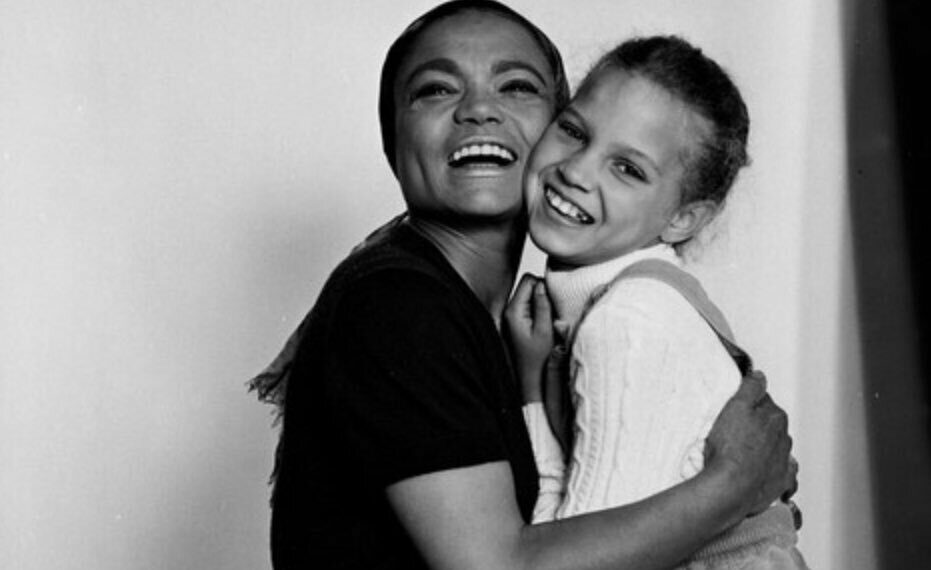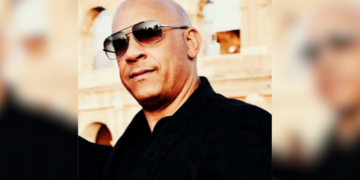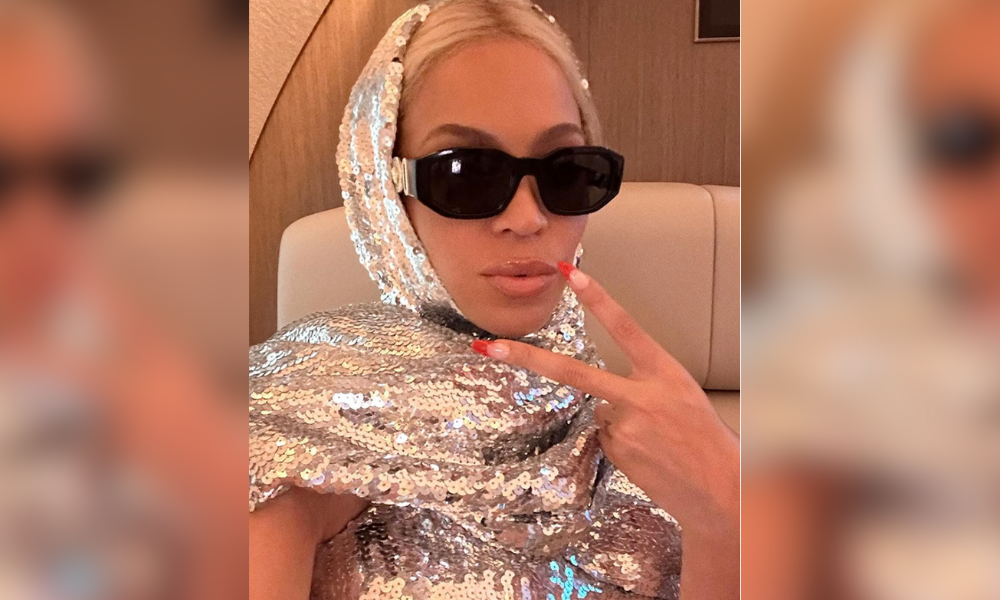Kitt Shapiro went viral on TikTok after she made a video affirming to people that she was the biological daughter of the renowned singer and actress Eartha Kitt. Due to numerous criticism and doubts from others, she appeared on The Tamron Hall talk show to defend herself. Kitt’s father was reportedly white.
“So, let’s just address the obvious,” Shapiro said in the TikTok video. “There are many of you who question whether I am truly my mother’s biological child, which is hurtful and insulting. Especially since, you know, there’s a lot of people out there who don’t look the way we think they should look. We have this predetermined idea on how a multiracial human being should appear.”
She continued, “I am my mother’s biological child. I do look like my mother for people who are willing to see past the blonde hair and the light skin. What can I say? Genetics are a peculiar thing. My mother was mixed race. I am mixed race. My father was pretty much as white as they come. He was German and Irish. This is the way I came out, and I don’t know what to say.”
@kittshapiro I am my mother, Eartha Kitts, biological daughter ❤️#earthakitt #earthakittcatwoman #earthakittinterview #kitttok #icon #empowerment #femaleempowerment #race #blackandwhite #realtalk #biracial #biracialcouple #raceinamerica #blackwomen ♬ original sound – KittShapiro
On The Tamron Hall Show, Shapiro opened up about how she initially wasn’t going to address the negative comments. Still, since the scrutiny lasted for years, she decided she had enough and not only defended herself on TikTok and Hall’s show but also in her memoir, Eartha & Kitt: A Daughter’s Love Story in Black & White.
She reiterated everything she explained in the TikTok video, adding, “Now, my mother only had one child, and this is what she got. She actually loved the fact that I was this mutt, she said. She would say to me, ‘You either break every rule, or you fill every quota.'”
Shapiro went further, “She said, ‘you’re a walking United Nations, and I truly think that she was proud…to be the parent of somebody that couldn’t be easily identified because she herself had been so stereotyped and so pigeonholed because of her skin color, obviously.”
She mentioned how she experienced discrimination like her mother, only because she wasn’t “Black enough.”
When Hall asked Shapiro about her first encounter with someone who didn’t recognize her as Kitt’s daughter, Shapiro dove into how no one addressed it because all many people saw was her mother’s fame, which is why many accepted Shapiro. The only person who discussed it was Kitt.
“My mother often talked about how…she would always talk about…how beautiful I was,” she recalled, stating she was her mother’s only child. “How wonderful it is to have this mixed race and how mixed-race people are so much more interesting. No offense to everyone who’s not, but I think…look, there’s one thing I think we should be able to a take a DNA test from birth because we all would be realized how much more mixed up we are.”
After Kitt died in 2008 of colon cancer, Shapiro remembered her first doubter on Facebook who responded to her blog. Kitt was the first Black woman to play Catwoman, paving the way for actresses like Halle Berry and Zoe Kravitz. She was also the phenomenal singer behind the Christmas hit, “Santa Baby.”
“It was in response to ‘you can’t possibly be her biological child, she obviously lied to you her entire life, and you were clearly adopted,” she told Hall.
She then mentioned how in the 1960s, it wasn’t easy for a Black woman to adopt a white baby. According to the Adoption History Project by the University of Oregon, transracial adoptions weren’t precisely accepted by Americans in the 1960s because of the Black and white color line.
“My father was as little white pasty Irish…German Irish as you can get,” Shapiro explained.
When asked if she and her mother’s contrasting skin color worried Kitt, she said that her mother knew many would question her.
To give an example of how people genuinely didn’t think she was her mother’s biological daughter, whenever Kitt answered the door of their house, people assumed Kitt was the nanny or housekeeper.
Shapiro recounted a time she wrote about in her memoir when her mother was denied entry into a whites-only theme park in South Africa.
“You’ll have to get the book and read the story,” she stated. “But the story is so profound because it was one of the first times I truly realized that my mother and I looked different.
She continued a little of the story, “This person at the park didn’t know who she was, and he didn’t realize that she had this diplomatic status when we were in South Africa. And he asked her to leave and, so she just stood up, took my hand and we went to walk out of the park, and I started saying to tell him who you are like, he doesn’t understand, you need to tell him.”
She said Kitt taught her a lesson,”‘God may not be there when you want him, but he’s always on time,’ and as it turns out, the owner of the amusement park found out that she had been thrown out of the park and was very very upset and embarrassed that she’d been thrown out of the park, so he said, ‘if there’s anything I can do if you want tickets to the amusement park or whatever I can do for you Miss Kitt, I’ll make it up to you.”
Kitt told the amusement park owner that she would love for him to donate to a school made for African American children along with tickets to the amusement park for Shapiro and other “colored” children who were her friends.
Hall put up a picture of Shapiro and her friends at the amusement park, and Shapiro explained that her mother believed the image of her at the amusement park made “a greater statement than if she had made a scene in the moment.”














